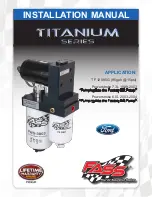
CONTINUED
Position the lap part of the belt as
low as possible across your hips,
then pull up on the shoulder part of
the belt so the lap part fits snugly.
This lets your strong pelvic bones
take the force of a crash and reduces
the chance of internal injuries.
If necessary, pull up on the belt again
to remove any slack, then check that
the belt rests across the center of
your chest and over your shoulder.
Insert the latch plate into the buckle,
then tug on the belt to make sure the
belt is securely latched. Check that
the belt is not twisted, because a
twisted belt can cause serious
injuries in a crash.
Properly adjusted head restraints
will help protect occupants from
whiplash and other crash injuries.
See page
for how to adjust the
head restraints and how the driver’s
and front passenger’s active head
restraints work.
157
Protecting Adults and Teens
Fasten and Position the Seat
Belts
5.
Dr
iv
er
and
P
asseng
er
Saf
e
ty
17
Improperly positioning head
restraints reduces their
effectiveness and you can be
seriously injured in a crash.
Make sure head restraints are
in place and positioned properly
before driving.
11/07/20 18:01:34 31SJA670_022
Summary of Contents for 2012 RL
Page 6: ...11 07 20 17 59 21 31SJA670_005 ...
Page 8: ...2 11 07 20 17 59 34 31SJA670_007 ...
Page 12: ...6 11 07 20 18 00 10 31SJA670_011 ...
Page 208: ...202 11 07 20 18 25 50 31SJA670_207 ...
Page 404: ...398 11 07 20 18 52 40 31SJA670_403 ...
















































